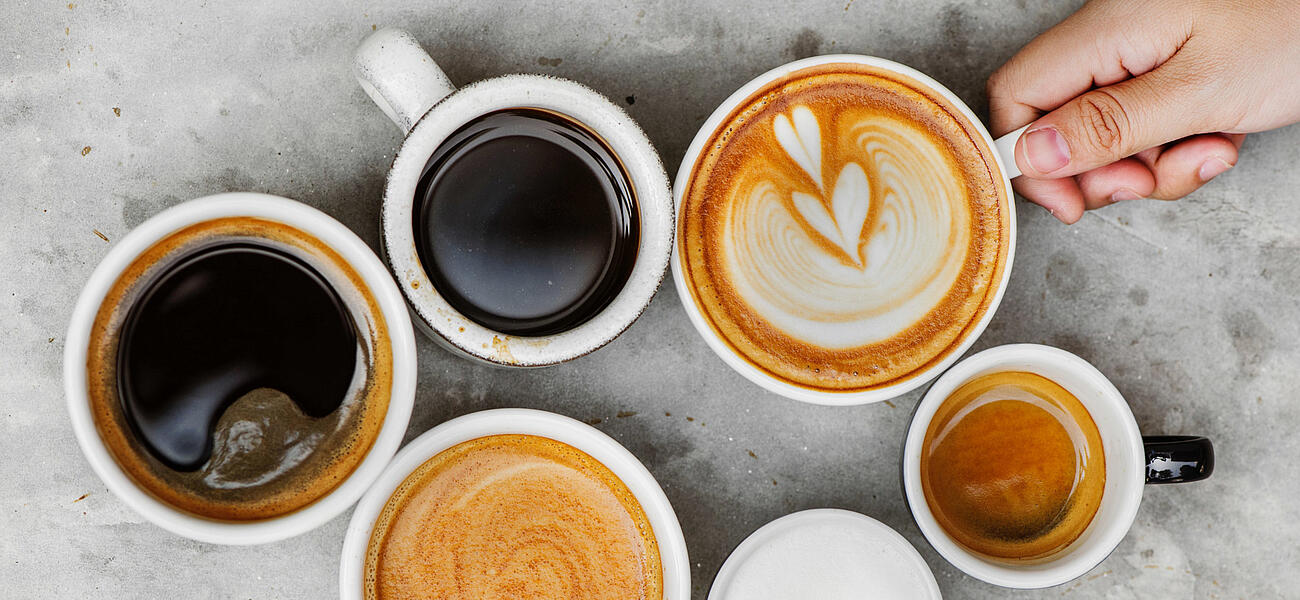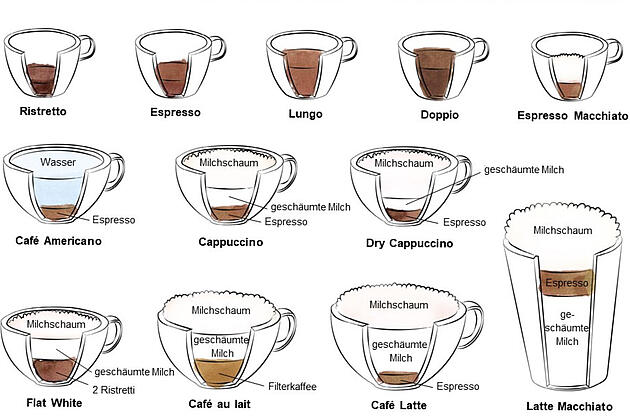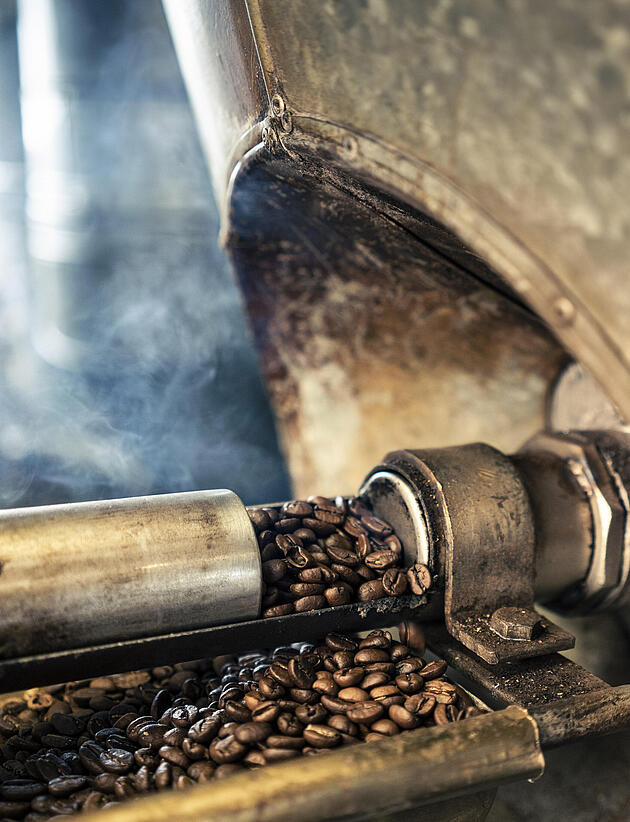If you’ve been looking through our blog articles, you may have noticed that the world of coffee not only boasts a variety of beans, but also a wide range of beverages and methods of preparation. These often have English or Italian names, which can sometimes make ordering and enjoying these drinks rather complicated. We take a look at some history – and explain the differences between ristretto, flat white, Americano and other coffee drinks.
The classic base: espresso
Every country has its own coffee culture and selection of coffee specialities. We all know that Italy is considered a mecca for espresso – but latte macchiato also has its origins there. Originally conceived as a children’s drink, the delicious blend of milk and espresso found its way into the cafés of Europe’s major cities in the mid-1990s. Today, latte macchiato is a popular treat at any time of day.
Those who prefer their coffee without milk can drink a ristretto or Americano; these are prepared with different techniques and ingredients, but also have an espresso as their base. Ristretto is literally a concentrated espresso – brewed with a shorter extraction time. Ristretto has a strong, full-bodied flavour and – thanks to a finer balance between liquid and crema – is creamier and less bitter than a conventional espresso.
Why do we call it “espresso”?
The jewel in the crown of Italian coffee culture gets its name from the way it’s prepared: by “pressing” hot water through finely ground coffee under high pressure.
Those who love a classic espresso with its strong aroma and intense flavour sometimes prefer it a little milder. In that case, simply add one or two shots of hot water to create an Americano. Also known as a “Verlängerter” in Austria, the water dilutes the coffee for a milder taste experience.
Magic with milk: cappuccino, flat white and caffè latte
Whether cow’s milk, oat, soy or almond varieties: milk opens up a whole new world of coffee creations, in addition to the rich-tasting latte macchiato. These include cappuccino and its Australian cousin, the flat white – popular coffee beverages that combine milk and espresso in different ways.
The cappuccino is one of the world’s most famous coffee creations, and consists of a strong espresso, hot milk and a generous layer of creamy milk foam. Traditionally, the ratio of espresso, milk and foam is 1:2:2, which gives the drink its balanced flavour.
On the other hand, flat white is a speciality developed by baristas in Australia and New Zealand, and is an elegant variation of a double espresso combined with steamed milk. What makes flat white different is the milk foam, which – as the name suggests – lies flat on the espresso and has a fine-pored texture.
In contrast, caffè latte contains a lot more milk foam: a shot of espresso is followed by a large cup of steamed milk, making the flavour of the coffee more subtle. Be careful not to confuse this with its French relation, the café au lait: while cappuccino and caffè latte are espresso-based, café au lait is prepared with filter coffee and hot milk.
By the way:
Our Dallmayr Academy also offers tailored courses on your preferred preparation techniques. Whether you’re interested in the extraction stages of espresso or beautiful latte art on a cappuccino – our team of trained baristas will patiently explain the exact techniques you need to get the very best out of your coffee.
And what role does the roasting level play?
In short, an unassuming one – but certainly the most important! After all, the quality and freshness of the coffee beans, as well as roasting and preparation techniques, all have a major impact on the final taste experience. Whether you prefer ristretto or a coffee with lots of milk, it takes several factors to enjoy the perfect cup of coffee – from the right roasting level (light, medium or dark) to the right techniques during preparation.
Simply looking at the colour of the beans provides an initial indication of the coffee’s flavours and aromas: a lighter roast is often the best choice for making fruity filter coffees, while darker roasts are usually better for strong espressos.



